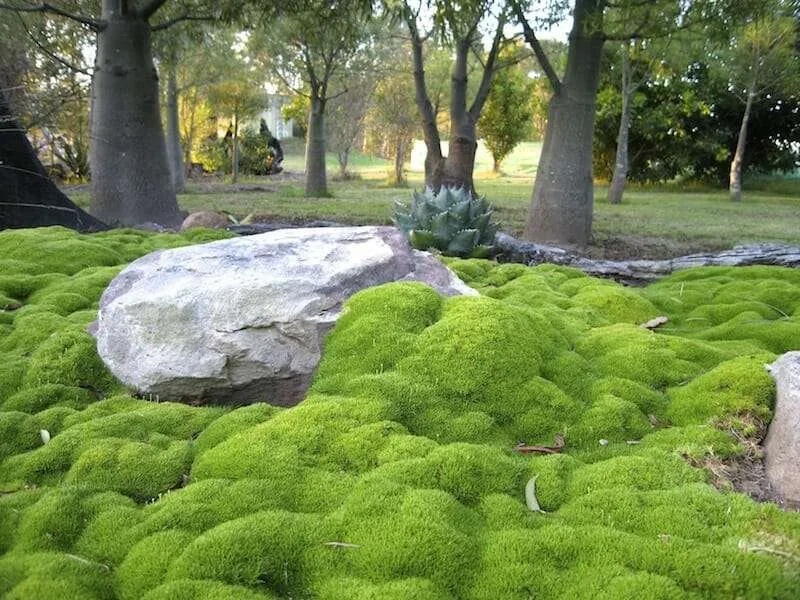Seeds are amazing. They contain everything plants need to grow, and come with simple instructions to “just add water.” Of course, some need a bit more than that—read on—but for the most part, each contains all it needs, in one tidy package, to transform into a plant.
Here’s what you need to know about seeds.
1. They can remain dormant for thousands of years.
These tiny powerhouses can lay dormant, waiting for just the right conditions (or a scientist), to sprout. One of the oldest seeds to germinate is a 2,000-year-old date palm seed from Israel. Scientists found three seeds; one of them germinated and grew into a full sized plant. And recently, scientists grew a 32,000-year-old flower from seeds found in the Siberian permafrost. (This, however, required tissue culturing and wasn’t strictly germination.)
2. They come in different sizes.

The largest seed is from the double coconut palm, Lodoicea maldivica, and weighs between 30 and 60 pounds. On the other end of the spectrum are the .05-mm seeds of Anoectochilus imitans, an orchid species found on New Caledonia in the South Pacific; they’re like specks of dust.
3. They are trigger-happy.
While seeds contain almost everything to grow into a plant, to get started, they do need a trigger in the form of heat, light, or cold. Some plants, like tomatoes, require heat, about 70°F, to germinate. Giant sequoia rely on forest fires to open their pine cones to release the seeds. Common houseplants (e.g., begonias and coleuses) may need direct light; their seeds need to be on the top of the soil when planted. Cold stratification, a period of cold temperatures, is needed for many northern native flowers, such as coneflowers, milkweeds, and lupines.
4. They have built-in defense systems.

Because seeds contain vital nutrients, they are an attractive food source for many animals. To ensure that at least some seeds survive to see the light of day and grow into plants, they often have protective mechanisms. For instance, a hard shell is one way to fend off hungry critters. (If you have ever cracked open a walnut, you’ll understand.) Other plants use poison as a weapon: raw lima beans and flaxseeds contain a toxin that is deactivated only by cooking. (Apples and apricot seeds also have a similar toxin, but we generally don’t eat the cores.) And then there are oak trees, which have mast years (when they over-produce acorns) that are followed by a few years of greatly reduced acorn production. One evolutionary theory for this boom-bust cycle: “predator satiation.” Scientists conjecture that during mast years, animals can’t eat up all the acorns, which allows for some to grow into trees.
5. They can sense their environment.
A study published in 2017 in the Proceedings of the National Academies of Science suggests that plants have a type of “brain” that senses when conditions are right to sprout and coordinates the responses of the various cells.
6. They can carry generations of history.

Heirloom seeds come with history. They are passed down through generations within an area or community. Some definitions say they need to be over 50 years old, but others require the plant line to be far older. And the stories they tell can be as interesting as a novel. The Mortgage Lifter tomato, for example, was a hybrid developed in the Great Depression that helped its inventor pay off his mortgage. (For more on heirloom seeds, see The Garden Decoder: What Are Hybrid, Heirloom, and Open-Pollinated Seeds?)
7. They are insanely nutritious.
Seeds are a powerhouse of nutrients. Fats, carbohydrates, proteins aren’t just good for creating new plants, they can also feed us and wildlife. Tofu, pasta, bread, peanut butter and jelly, and your favorite breakfast cereal—all are made from seeds. And according to the United Nations’ Food and Agriculture Organization, five grain crops (rice, millet, sorghum, wheat, and corn) make up 60 percent of the world’s calories.
8. They are platinum-level frequent fliers.

Seeds are masters of engineering when it comes to dispersal. Milkweed seeds fly on the barest of breezes. Velcro was inspired by burdock burrs. And a personal favorite, jewelweed, Impatiens capensis, sends its seeds out into the world via an explosion. The slightest touch to a ripe seed pod causes it to detonate, sending its seeds flying. Seeds are also clever stowaways. Squirrels have unintentionally planted forests of oak trees. And that poison ivy in your backyard? Like planted via seeds in bird poop.
9. They are used to make household goods.
Coconut coir, the fibrous part of the coconut seed, shows up in doormats, rugs, cordage, and fabrics. Soybeans, meanwhile, can be found in soy-based insulation, beauty products, candles, even tires.
10. They can help you get to where you’re going.
Ethanol is made from corn (yes, corns are seeds) and is added to gasoline. Biodiesel can be made from soybeans and sunflower seeds.
See also:
- 7 Favorites: Specialty Seed Catalogs
- A Good Start: At Hilltop Hanover Farm, Collecting and Saving Hyper-Local Native Seeds
- 5 Quick Fixes: Plastic-Free Ways to Start Seeds












Have a Question or Comment About This Post?
Join the conversation